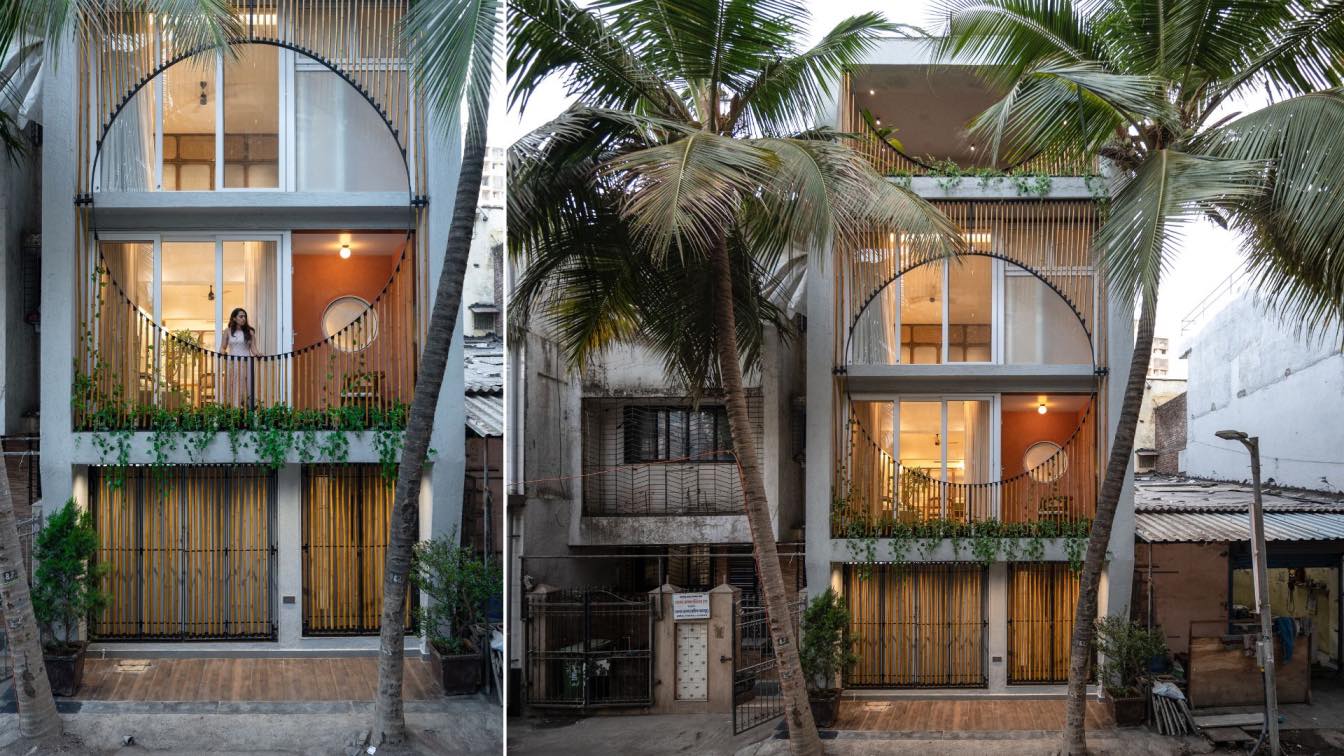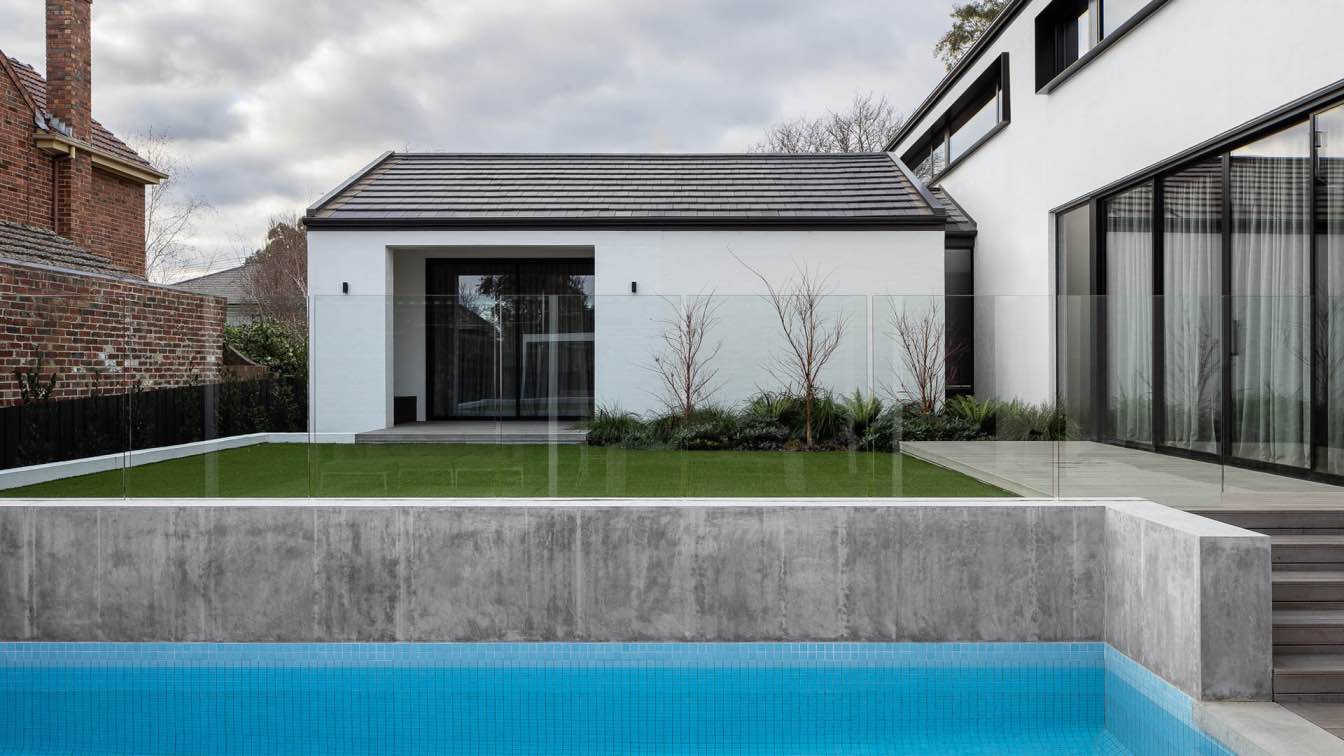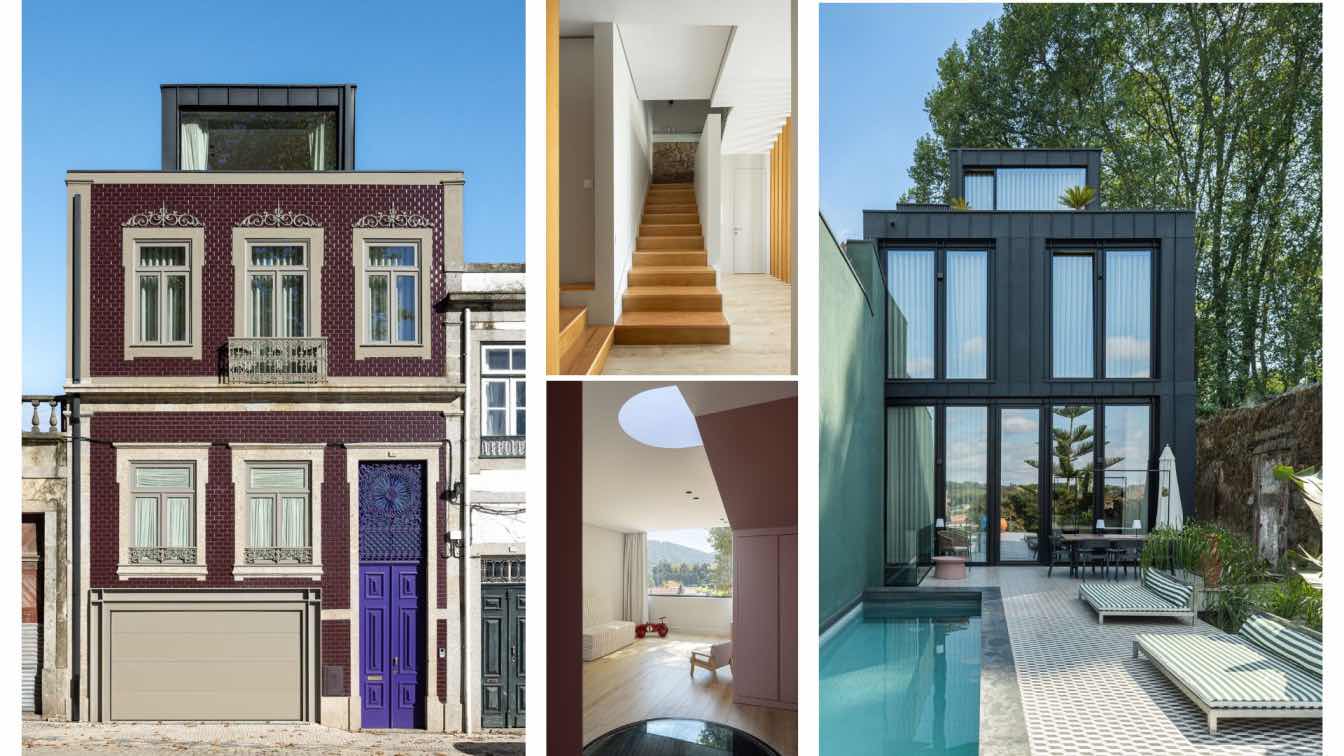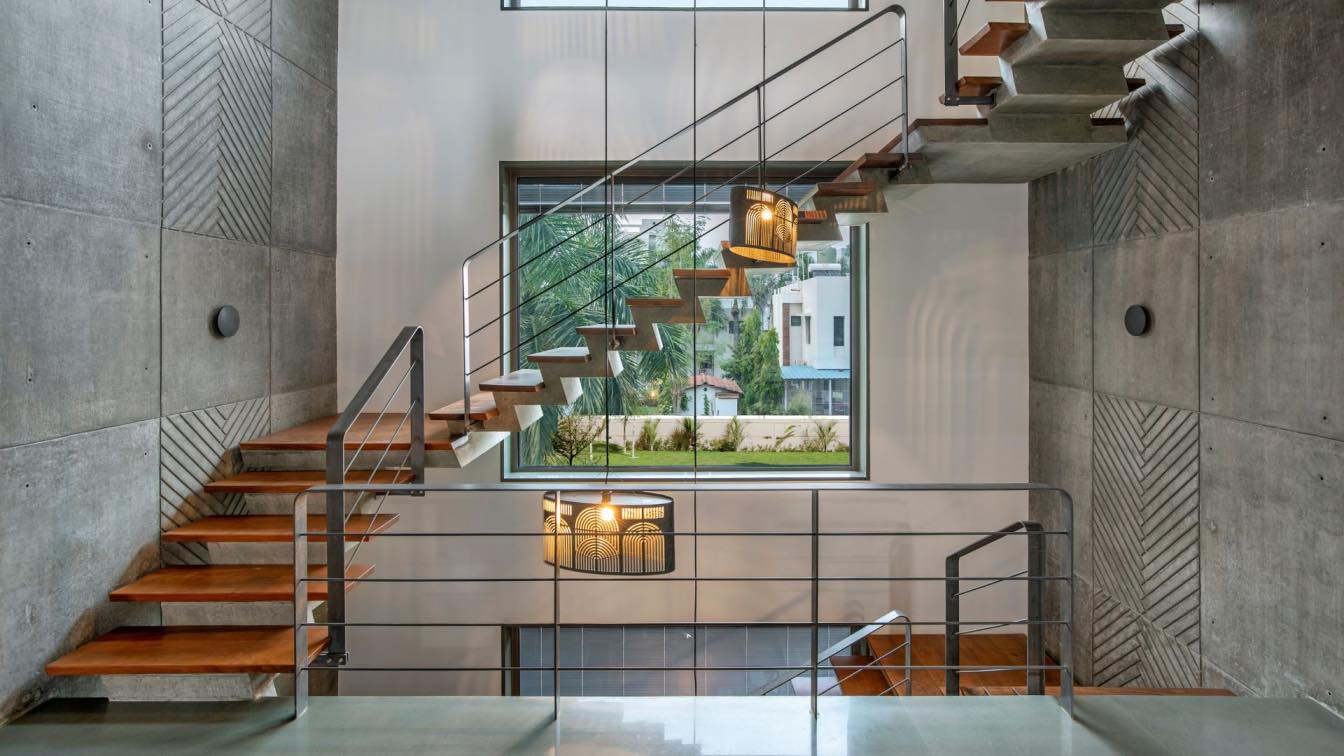Studio MAT: Designed to maximize ventilation while maintaining visual interest, the home represents a solution to counteract monotony, which is often done through visually interesting façades. Though aesthetically pleasing, this solution is important for more reasons than just this.
As most of the row houses have shared side walls overlooking the street in Mumbai, the solution of natural light and ventilation is a prerequisite for the design task. Design intent was to create a rhythm and flexible space, where people can live in harmony with natural element in this small plot of land.
This design brief outlines the construction of a newly built sustainable and earth-friendly house, incorporating solar power and rainwater harvesting systems. The project includes the installation of an on-grid solar system, a solar water heater, and the implementation of rainwater harvesting with underground water storage tanks. We also consider carefully bringing “nature” to living space. Nearly every location of the house always has at least a corner of the trees that will “soften” the space and make the feeling relaxed and gentle!
We have used a 3-layered facade, the first layer is 220 mm external wall to prevent the direct sunlight, the second layer is a green that blocks dust, generates oxygen and pushes hot air outward along with the bamboo screen that gives the house a unique aesthetic and sets the tone of the design as well; the third layer is glass door to get the light and prevent indirect heat to the house. This solution keeps the house naturally cooler, light-filled and has a view of plants and bamboos.
Additionally, lime plaster wash is done on the internal wall surfaces for passive cooling.

The façade
Building façade is perfectly framed by two exquisite coconut trees that have been growing tall for 18 years. The facade is made up of bamboo screen that makes the viewing experience very playful. This screen has a circular cut-out. It acts as a unique feature that is not only aesthetically pleasing but also has practical purpose. It first and foremost acts as a shading device protecting the inside from direct sunlight. Secondly it serves as a railing for the balconies.
Solar Power Systems:
Cost savings and maintenance: The on-grid solar system is estimated to generate around 175 units per month on average, surpassing the average monthly consumption of 130-200 units. This surplus energy will drastically reduce electricity load, potentially resulting in negative load during the summer. The simplicity of the system's installation and the absence of batteries make maintenance easy and hassle-free. Furthermore, connecting to the grid allows homeowners to monetize the surplus electricity generated, providing additional cost benefits.
Solar Water Heater
A 300-liter solar water heater is installed, consisting of 24 glass tubes. These tubes will capture heat from direct sunlight, efficiently transferring it to the water within. This system will reduce the dependence on electric geysers, conserving energy and reducing utility costs.
Rainwater Harvesting
The house is equipped with two underground water storage tanks, each with a capacity of 2500 liters. These tanks will collect and store rainwater during the rainy season, significantly reducing water wastage. The harvested rainwater can be used for various purposes, minimizing reliance on external water sources and conserving water resources.


























About Studio MAT:
Harsh Soneji, Principal architect, Studio MAT
Harsh Soneji is a practicing architect and founder principal and director of Studio MAT. Born in Mumbai, he studied at the renowned Sir JJ College of Architecture in Mumbai. After graduation he worked at Studio Mumbai with Bijoy Jain Before joining Architecture BRIO and working with Robert Verrijt and Shefali Balwani. Harsh has a keen interest in practicing in a wide variety and scales of projects. He is committed to exemplary planning, design and execution of the projects at Studio MAT.
Pratha Bhagat, Principal architect, Studio MAT
Born in Mumbai, Pratha Bhagat completed her graduation from KRVIA. She Worked in Auroville for a year before starting her professional career at Abraham John Architects. Having a keen interest in exploring new materials and design led her to take on many works post that with DIG architects, Mumbai. Pratha Bhagat is a practicing architect and founder principal and director of Studio MAT. She aims at transforming every site into a unique environment.





